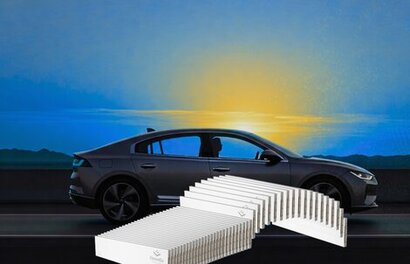
The development of the Edge574 involved a critical strategic decision: the establishment of clearly defined realistic, measurable, and achievable performance targets. Thus the Edge574 Blade Cell has a peak charging power of 1 MW for a battery pack consisting of 210 cells. In temperatures of around or over 25°C with the capability to charge from 10 percent to 80 percent in 12 minutes, it adds up to 66 kilometres of range per minute - or 1.1 kilometres per second - dramatically cutting down charge times for EV users.
Charging performance is influenced by temperature. So at 10°C, the Edge574 Blade Cell can achieve an 18-minute charge time, adding 44 kilometres of range for every minute of charging, with a peak charging power of 650 kW. At 0°C, the cell maintains a strong charging capability, providing 25 kilometres of range per minute of charging, with a peak charging power of 415 kW.
ElevenEs set out to engineer the Edge574 Blade Cell for endurance, supporting a cycle life that enables a range of at least 500,000 kilometres. This in turn enhances the value proposition for consumers and also contributes to a more sustainable approach by extending the usuable life of batteries.
The Edge574 Blade Cell also incorporates optimised design for both cell-to-pack (CTP) and cell-to-body (CTB) integration, maximising space utilisation within a vehicle and leading to increased energy density at the pack level, contributing to greater driving range. It is also designed for a wide operating temperature range, with discharge capabilities from -30°C to 60°C.
This ensures consistent performance in diverse environmental conditions, which means that the cell maintains nominal capacity all the way up to 55C. At -10C, the achievable range would be 75 percent of its nominal capacity.
ElevenEs achieved a series of key technological advancements, notably a significant 15 percent reduction in DCIR (direct current internal resistance), compared to the company's previous generation cell, which already had very low internal resistance. This in turn derives from an improved mechanical design and the optimisation of electrode materials and new electrolyte. The cell also features an enhanced design that boosts charging efficiency, enabling rapid and effective energy transfer. The use of upgraded materials enhances both the performance and safety characteristics of the cell, while new safety measures are specifically tailored to support the demands of fast charging.
For additional information:

